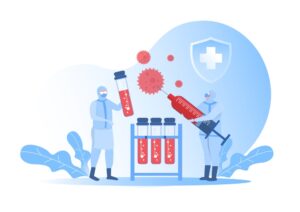May 16, 2022

Cell therapy developers need uniform handling, storage, and usage methods say the authors of a new report examining how the market for centrally manufactured products is evolving.
The study – published in the Journal of Translational Medicine in April – looked at the role medical center processing labs play in cell therapy distribution and usage and concluded that such facilities will be a potential bottleneck unless handling processes become more uniform.
“Cell processing laboratories at many academic medical centers are involved with many different autologous products manufactured by several different centralized laboratories.

Image: StockPhotoSecrets
“The handling of these products by medical center-based cell therapy laboratories is complicated and resource-intensive since each centralized manufacturing laboratory has unique methods for labelling, storing, shipping, receiving, thawing, and infusing the cells,” the authors write.
Uniform handling
To address this, the authors argue that manufacturers need to come together and develop some industry standard practices.
“The field would benefit from the development of more uniform practices. Protecting the intellectual property involved with a biotech’s manufacturing process is important, but this should not impact labelling and shipping of the starting cellular material and receiving, thawing, and infusing the clinical cellular therapy.”
And, while the authors acknowledge differences between cell therapies mean standardization will also be difficult in some areas, there are still opportunities for the development of best practices and uniform handling methods.
“While the wide variety of cell types and qualities of cells being used clinically does not allow for the use of a single method, the development and use of best cryopreservation and thawing practices using GMP reagents are needed. Some standardization of the containers used to store the cell therapy, as well as cell infusion sets, would also be worthwhile.”
Coordination
The authors also suggest that the development of handling common methods should be overseen by an independent body.
“The development of a coordinating center similar to those established to facilitate the collection, shipping, and transplantation of hematopoietic stem cells from unrelated donors would also be beneficial.”
The National Marrow Donor Program (NMDP) – which was established in 1986 and based in Minneapolis, Minnesota – maintains a single donor registry and co-ordinates the collection of donations.
About the Author
You May Also Like



